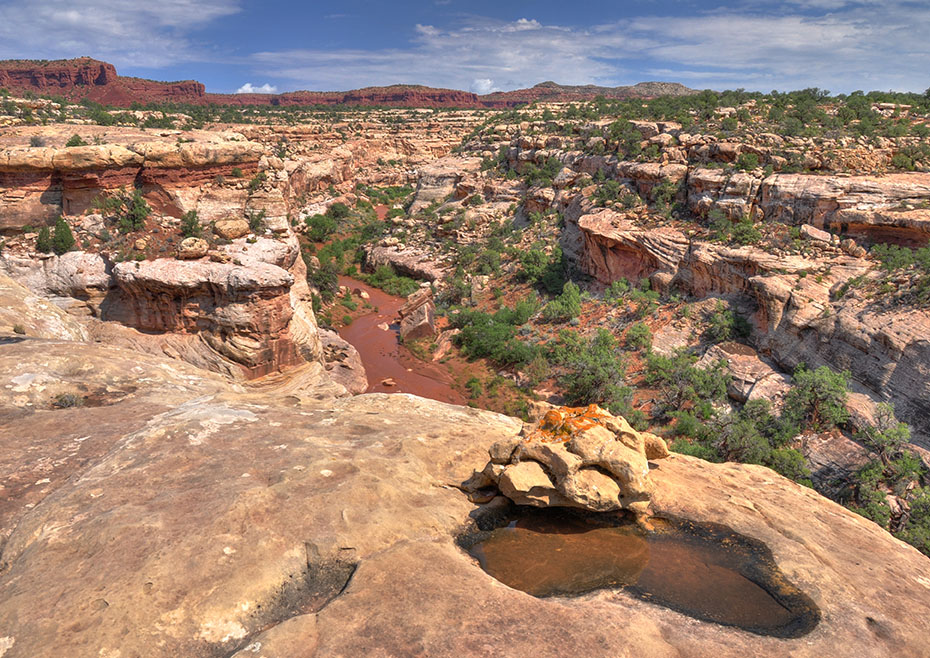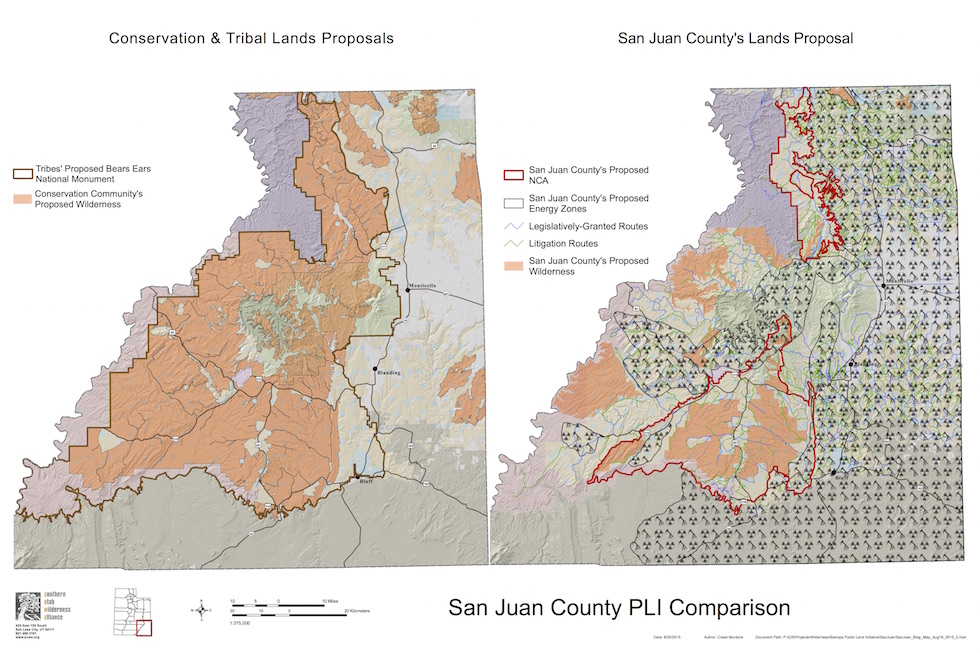Recently, newspaper stories and rumors have swirled around both a potential national monument in San Juan County, Utah, and Rep. Rob Bishop’s Public Lands Initiative. Let me try and cut through the clutter to give you an idea where things currently stand.
First, the monument. A historic coalition of Native-American Tribes and Pueblos have come together to call for a Bears Ears National Monument or National Conservation Area in Utah. This proposal, which we fully support, encompasses 1.9 million acres of dense cultural artifacts, stunning redrock canyons and plateaus, and high-elevation forests. The tribal coalition recently met at Bears Ears with officials from the departments of Interior and Agriculture to discuss their proposal.
Second, the Public Lands Initiative. As you are likely aware, more than two years ago Rep. Rob Bishop announced his Public Lands Initiative as an effort to resolve public lands issues in Eastern Utah. We were impressed by Rep. Bishop’s willingness to undertake this difficult task and, in turn, we brought good faith and substantial resources to the table. We jumped into time-consuming discussions and dialogue with the Utah congressional delegation and the local counties.
However, the dialogue and effort has not been uniform. San Juan County, for example, has opted for a process that excludes participation from anyone outside the county. Despite the fact that the Public Lands Initiative has been around for more than two years, only this month did the county commissioners finally put forward their proposal. As you might guess, for a county that has chosen to avoid “external” dialogue, the proposal is terrible.

San Juan County leaves out deserving landscapes for protection (Hatch Point and White Canyon, above, to name a few of many), it asks for more land dedicated to energy development than it does for conservation, and it asks that the President’s authority to set aside national monuments be removed. In an act of pure chutzpah, it demands that Recapture Canyon be turned over to the county. Remember, current commissioner Phil Lyman was convicted of trespass and conspiracy for leading an illegal off-road vehicle ride down Recapture Canyon (which is closed to vehicle use in that part of the canyon).
San Juan County ignored the requests of the tribal coalition that it propose meaningful protection for the Bears Ears proposal. Ironically, it even ignored the majority of its own county respondents who asked for protections in this area (opens in PDF). And no surprise, it ignored our proposal (see comparison below).

This is where the national monument and PLI paths collide. In a move that would fail to surprise even the casual Utah political observer, the Utah governor and congressional delegation have recently opposed the designation of the Bears Ears National Monument. This opposition, though, is based on the potential for the Public Lands Initiative to resolve issues in San Juan County. Utah Governor Gary Herbert said that the Public Lands Initiative provides for “negotiation, compromise, and debate.” Unfortunately, those three factors have been completely absent from the discussion in San Juan County.
It is worth reiterating that San Juan County completely excluded participation from anyone outside its boundaries. Allowing only 0.005 percent of the nation’s population to determine the future of our public lands (and, in reality, ignoring most of its citizens’ input at the same time) will not lead to a good outcome.
We remain willing to engage in “negotiation, compromise, and debate.” It is the only way in which public lands issues will be fully resolved in San Juan County. We are anxiously awaiting details from Utah’s congressional delegation and governor as to how that will happen in San Juan County. Absent that, it is our fear that the Public Lands Initiative may become little more than an excuse to forestall a new national monument in Utah.

